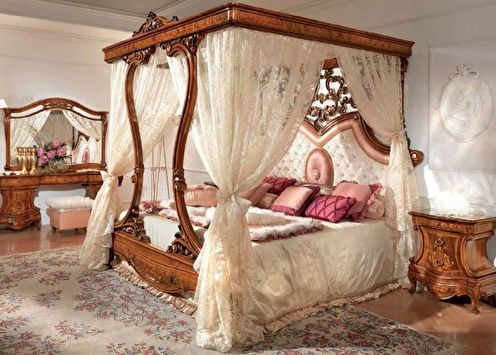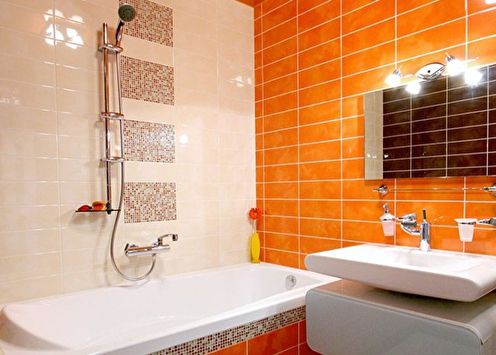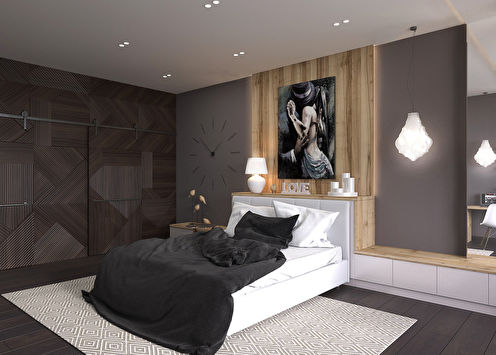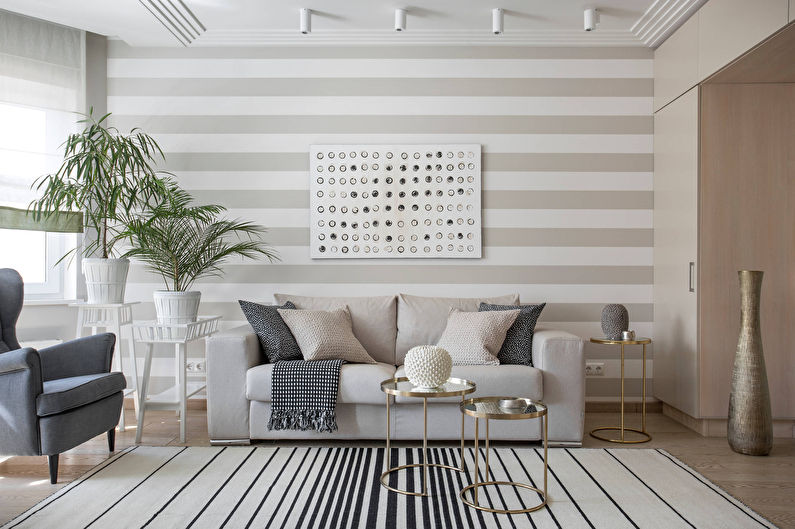
Wallpaper is a quick and relatively inexpensive way to update the living room interior. Due to the wide variety of shades, patterns and textures, they can be used to transform the room, visually expand, and also make it cozy and stylish. In order not to get lost among the huge assortment presented in construction stores, we suggest that you familiarize yourself with the types of wallpaper, find out the pros and cons of each material, read the recommendations and see photos of the best examples of the design of living rooms using them.
Types of wallpaper for the hall, their advantages and disadvantages
Paper wallpaper
This is the most affordable type of wallpaper. Due to their low cost, they can be used to decorate rented apartments, dormitories, or simply change every two to three years for new ones. Depending on the type of paper used, matte and glossy products are distinguished.
Thin single-layer wallpapers are also called simplex, and two-layer wallpapers, consisting of a dense substrate and a decorative front side, are called duplex. The latter are more resistant to getting wet, so they are not torn during gluing and they better hide the unevenness of the walls.
The advantages of paper wallpapers are low price, environmental friendliness (they allow air and microparticles of water vapor to pass through well), a large selection of patterns and colors. Among the shortcomings, it is worth noting the fragility, susceptibility to mechanical damage, burnout in the sun, and the fact that, collecting dust, they are not amenable to wet cleaning.
The walls should be perfectly even under the gluing of paper wallpaper.

Vinyl wallpapers
Such wallpapers are made by applying to a paper or fabric base an artificial material - polyvinyl chloride. It can be smooth, hard, foamed or embossed (silk-screen printing). The moisture resistance of PVC makes this material an optimal base for painting, and its light weight and mechanical strength make it easy to fasten to walls. The high price is justified by the long service life - from 10 to 20 years, and in addition - the ability to repaint (up to 5 times).
Vinyl wallpapers are resistant to moisture, quite elastic and durable, able to hide small irregularities in the walls. Volumetric drawings and beautiful texture make them a very aesthetic kind of finish. The disadvantages of vinyl wallpapers include the unpleasant smell of plastic (which should disappear with time) and the fact that they do not let air and steam through the walls do not allow them to “breathe”.
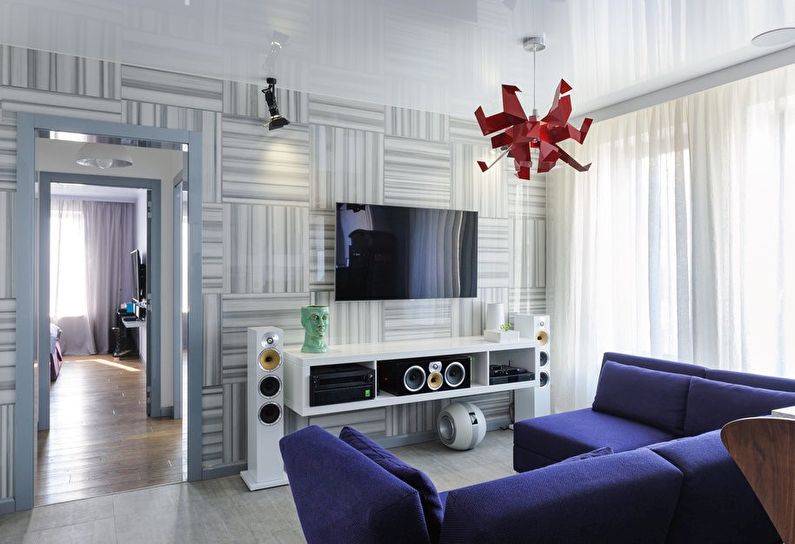
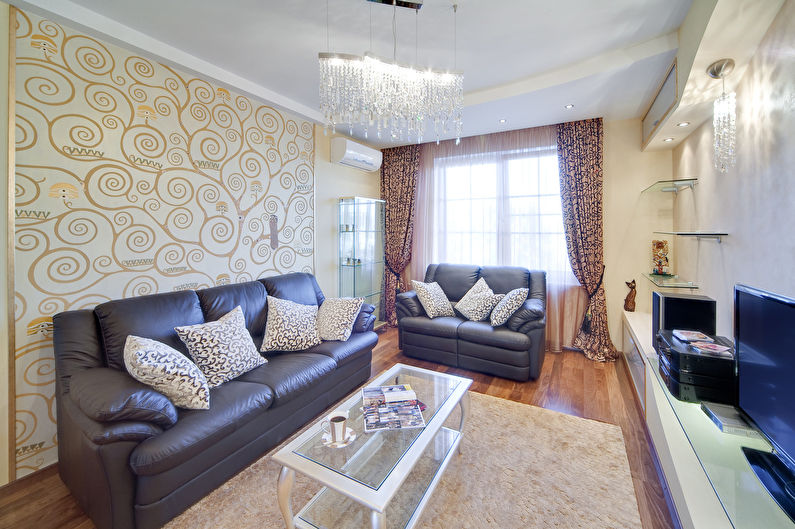
Textile wallpaper
Using fabrics to decorate the walls in the room is not cheap, but their amazing look is worth it. Linen, satin, silk, velvet, with amazing patterned interlacing of threads - they make the interior truly luxurious.
Fabric wallpapers require very careful care - they should be covered from UV and moisture, carefully cleaned. The environmental friendliness of such a finish depends on the material chosen, but in general, textiles pass air well.
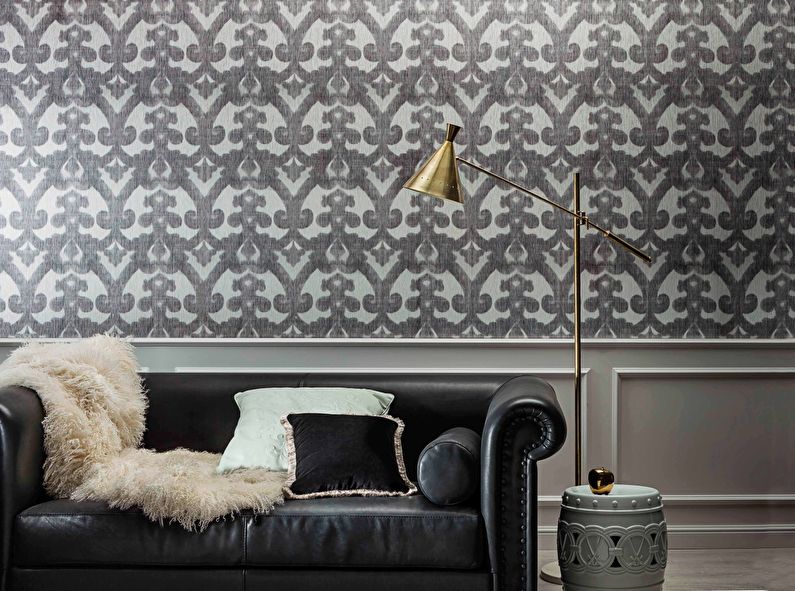
Cullet
They are produced by weaving from the finest glass threads. The result is a very durable translucent canvas with a relief pattern. These wallpapers are firmly fixed with starch paste over the plaster and are reusable.
The advantages of cullet screening include environmental friendliness (they include only natural materials such as quartz sand, limestone, soda, clay), fire safety (glass melting temperature + 600 ° C), durability (up to 30 years of operation).
The disadvantages are - relatively large weight and meager selection of textures.
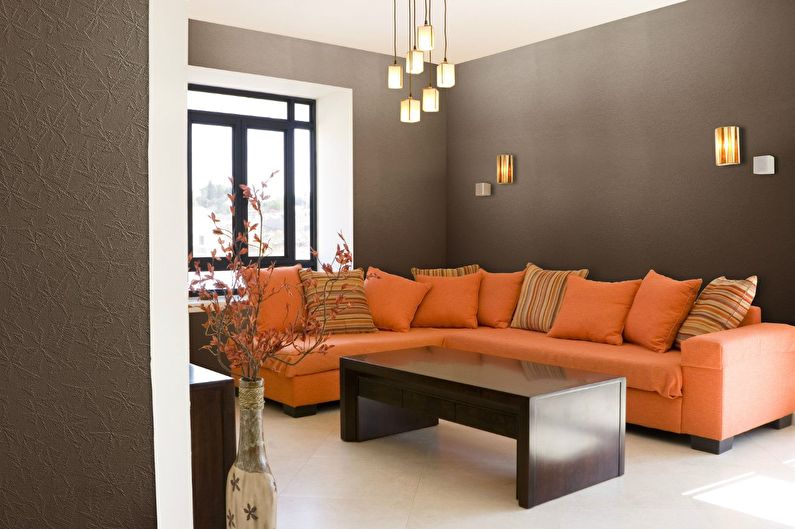
Liquid wallpaper
They can also be attributed to decorative plasters, because liquid wallpaper is, in fact, an acrylic solution with the addition of natural fibers (cellulose, sawdust, cotton, silk) and pigment.
This type of finish allows you to hide the original bumps, create an interesting texture, paint the walls with a color gradient. Liquid wallpapers are easy to apply and remove, have a beautiful relief, smooth the surface of the walls. Sparkles, small pebbles can be added to the mixture.
The disadvantages of finishing with liquid wallpaper include low moisture resistance.
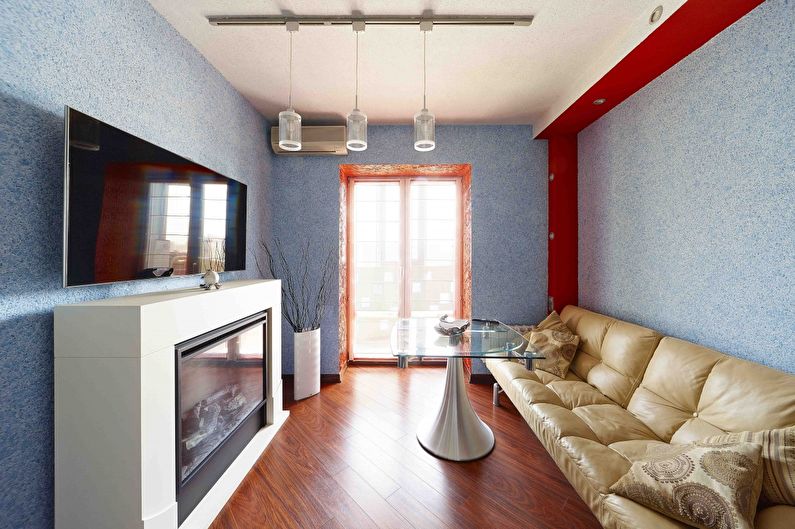
It's all about style!
A huge number of varieties of wallpaper allows you to find the perfect solution for any style of interior. Read on for some tips!
Wallpaper for the living room in a modern style
Art Nouveau suggests a restrained design in monochrome colors. For the living room in this style, plain or wallpaper with a dim graphic pattern (rhombuses, circles, lines, abstractions), imitation of polished marble, metal are suitable. An interesting addition, creating a visual perspective, can be wall murals.
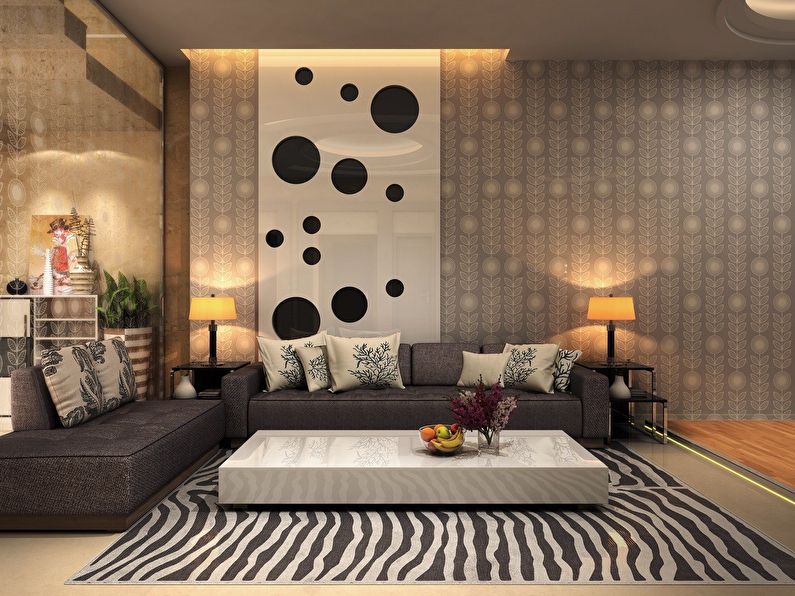
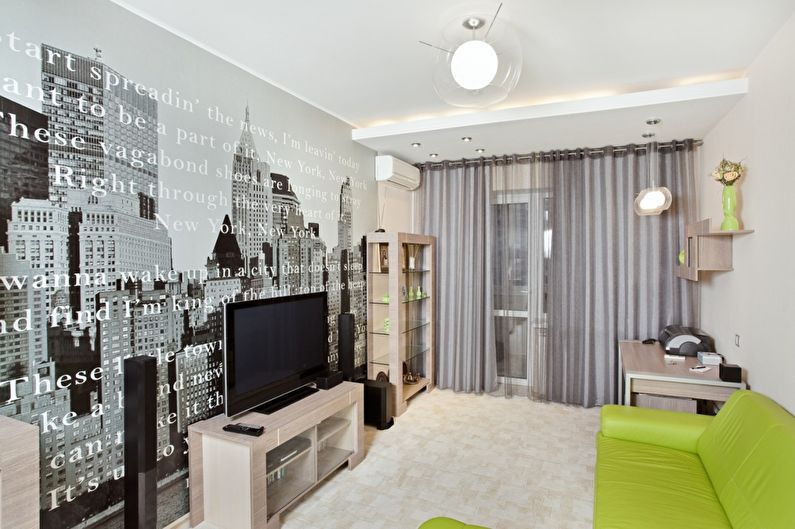
Wallpaper for the living room in a classic style
In the classic interior of the hall, light wallpapers with golden or silver floral ornaments that repeat the texture of expensive fabrics (satin, brocade, velvet), natural sandstone, mahogany, soft leather will harmoniously look.
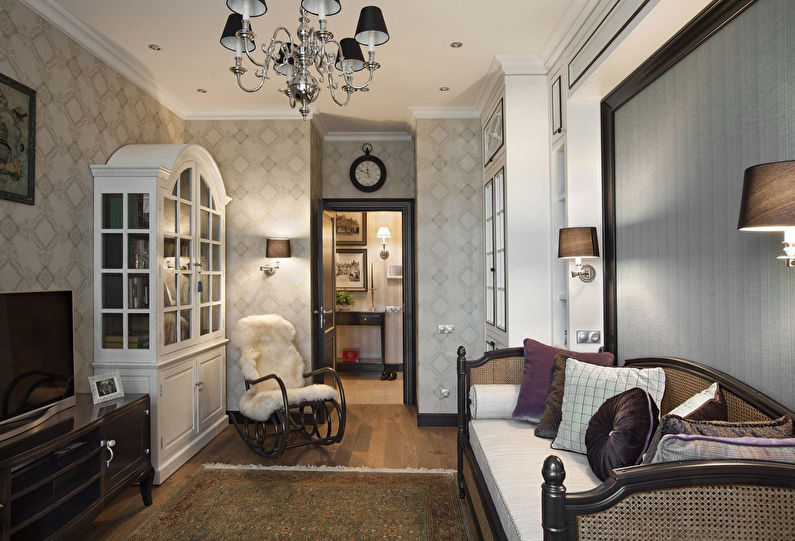
Provence style living room wallpaper
For a Provence-style living room design, it is better to choose matte pastel wallpapers with a small floral print. You can not glue them with a continuous canvas, but frame with monophonic inserts repeating the color of the patterns.
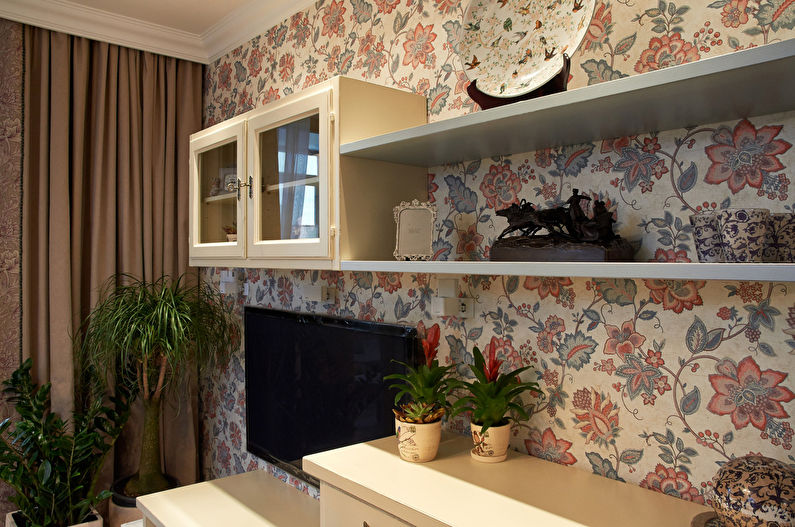
Scandinavian style living room wallpaper
The main motive of the Scandinavian style - snowy cliffs and transparent blue fjords - should also be reflected in the decoration of the walls. Wallpaper can be white, light blue, gray, with abstract patterns.
Visually expand the living room will also help murals depicting a winter mountain landscape or a waterfall.
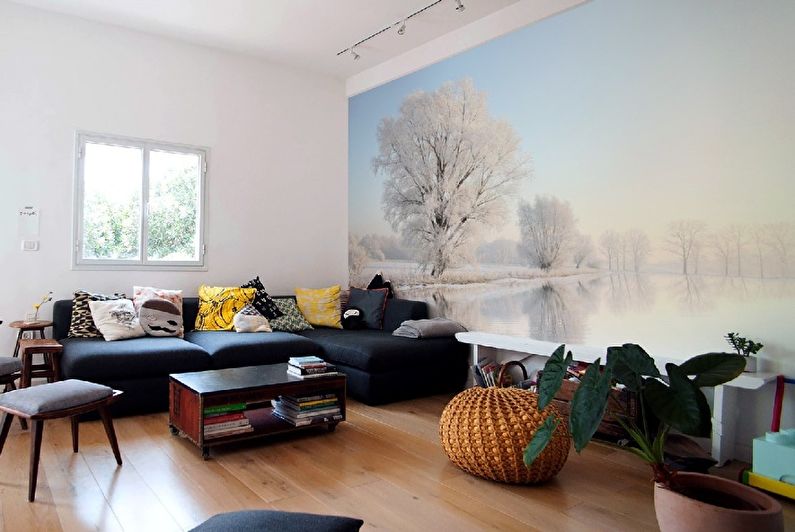
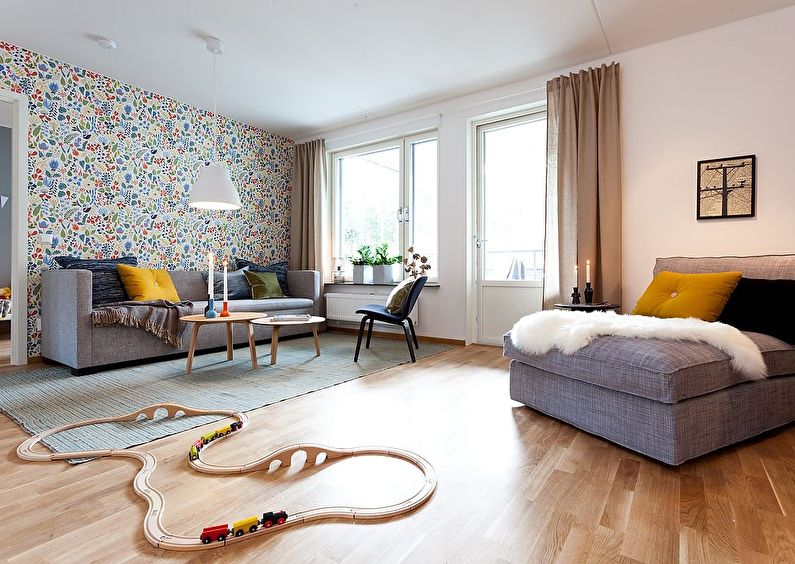
Wallpaper for the living room in the country style
This style is characterized primarily by natural materials. Imitation of masonry, wooden boards or logs, hay, straw - the basic options for country.
A relaxed rustic atmosphere will help create wallpaper with floral patterns, in a cage, with images of pets, birds, butterflies, pastoral scenes. Photo inserts should also remind of life outside the city: a lot of sun, sky, green trees, endless fields and horses.
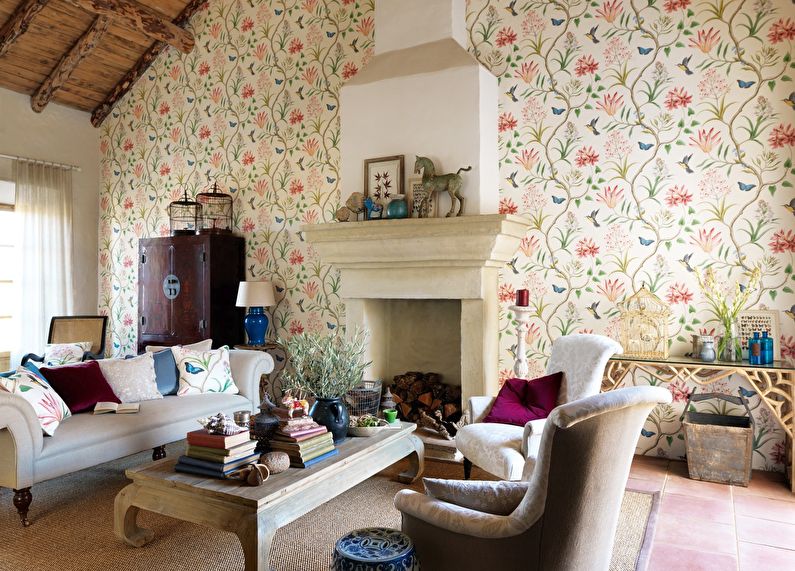
Color schemes
White wallpaper
White wallpaper in the room is an elegant, unobtrusive backdrop for a more vibrant decor and furniture. They are always appropriate, visually expand the space and give it a soft glow.
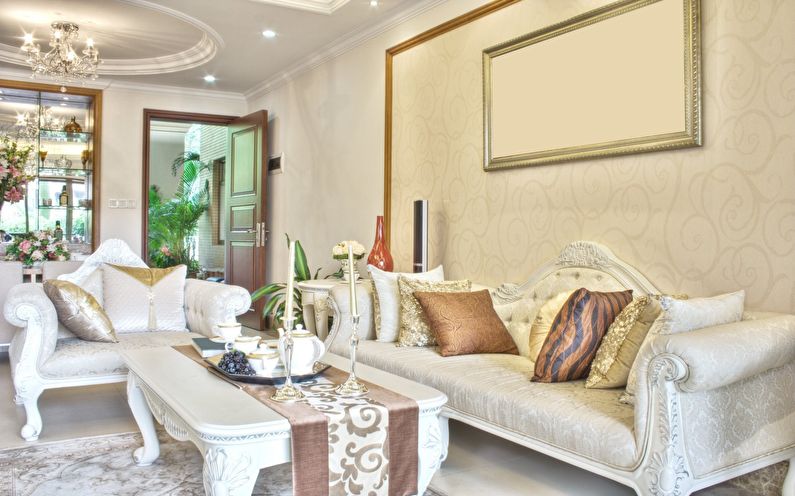
Gray wallpaper
A neutral palette from silver to graphite is perfect both for creating a monochrome design and for softening bright accents. The gray living room will always look modern and sophisticated.


Pastel Wallpaper
Dull, as if faded in the sun, bleached colors create a very pacifying atmosphere. Light blue, lilac, sand, beige, pink, greenish - they all blend perfectly together.
Living room with such wallpaper will visually appear more spacious.

Brown wallpaper
Shades of brown are ideal for a cozy home environment. The color of coffee and chocolate is in perfect harmony with the soft glow of yellow, festive purity of white, spring cheerfulness of green, as well as the heavenly hill of turquoise.
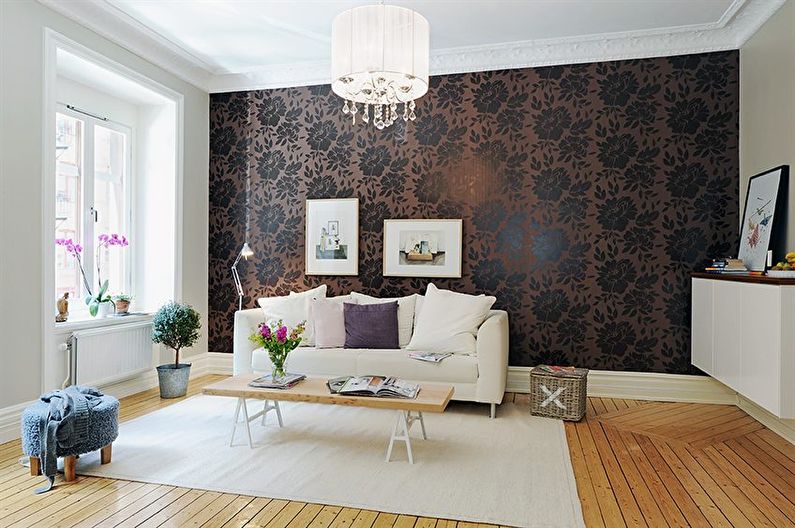
Yellow wallpaper
In yellow tones, it makes sense to design the walls of the hall, whose windows face the north-west side. Banana, lemon, orange wallpapers will fill the living room with warmth and light, and the inhabitants will be presented with a good mood.
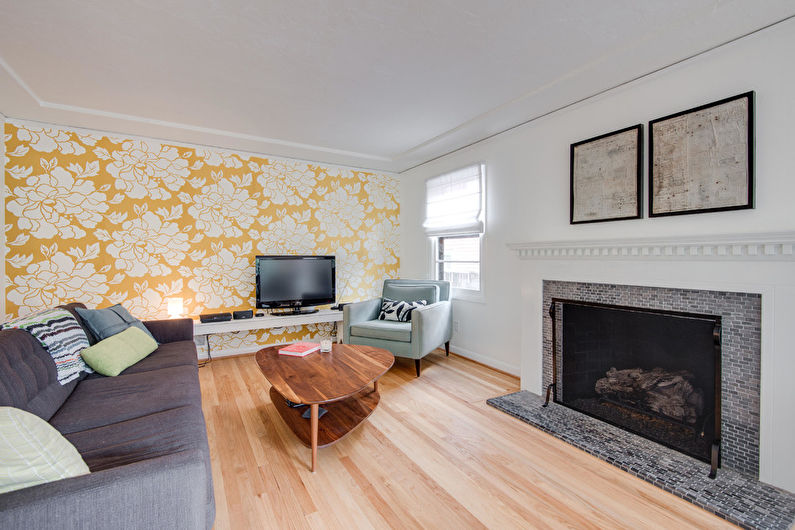

Combining wallpaper in the living room
So that the living room does not get bored with the monotony, different elements should be used for wall decoration.A successful combination of plain and patterned wallpaper will help to beautifully zoning the space, increase the height of the ceilings, expand or narrow certain areas, highlight dark corners.
Using this technique, you should be guided by the combination of shades table. The most uniform look of the uniform base and repeating in color patterns on a lighter background. Brilliant prints reflect light and attract attention; lines visually stretch the room; large elements fill the void of too large halls.
Wallpaper in the hall can also be combined with painting, decorative plaster, ceramic tiles, brick or masonry, wood veneer, cork and plastic panels. Carved wooden frames, stucco molding (or its imitation from polyurethane), drywall niches will help to highlight the most interesting areas.
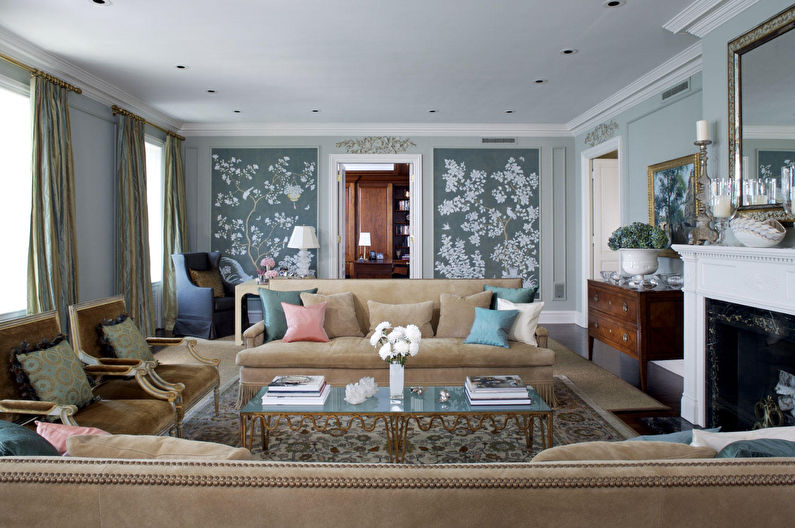
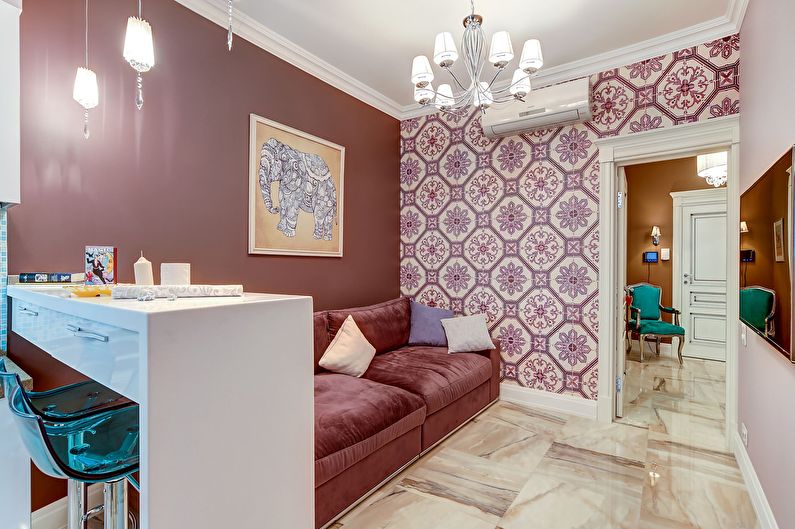
Wallpaper for a small living room / hall in Khrushchev
The main task of designing a small living room in Khrushchev is to make the room seem more spacious. To do this, the wallpaper should be light, plain, with a small neat pattern and vertical accents. You can add depth using photo-inserts and 3D optical effects.
If the wallpaper contains reflective elements (sequins, silk patterns, fluorescent coatings), it is necessary to provide good lighting - and they will give the room additional shine.
It is better to refuse large images, volumetric relief and bright contrasts on the walls in a small room.
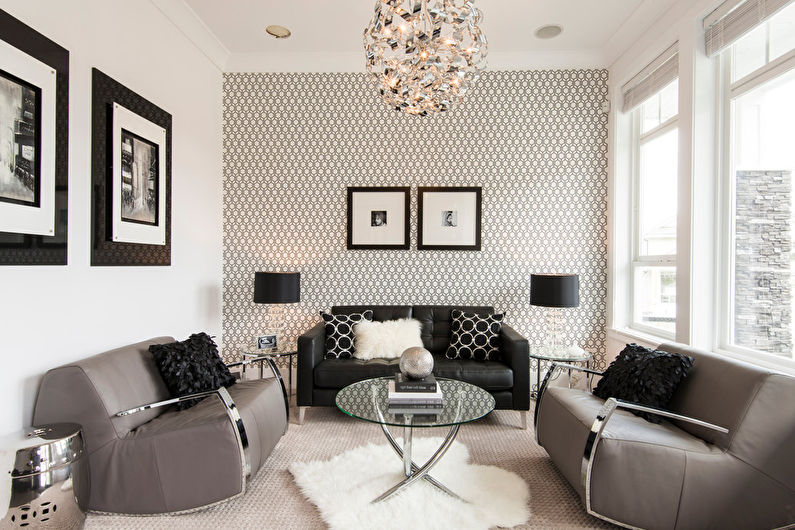
Wallpaper for the hall - photo ideas
In our photo selection you can see how various wallpapers for the hall look in the interior. Illustrative examples of the best design solutions will help to quickly make a choice and equip even the smallest living room with exquisite taste.
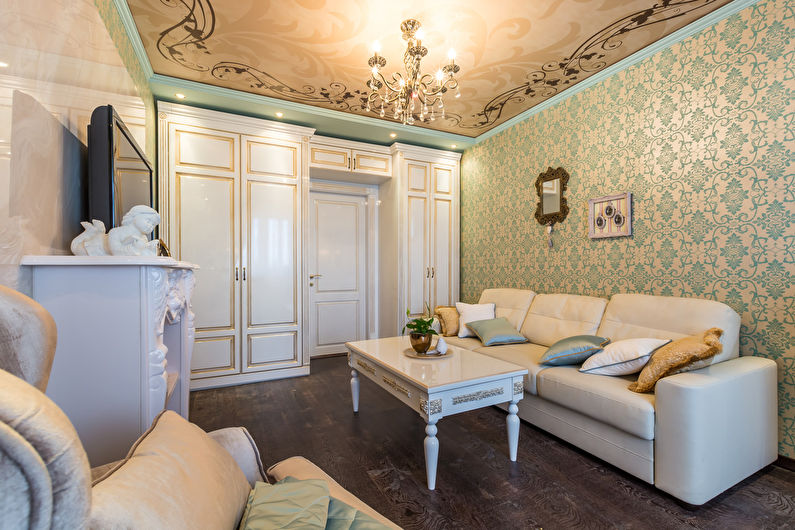
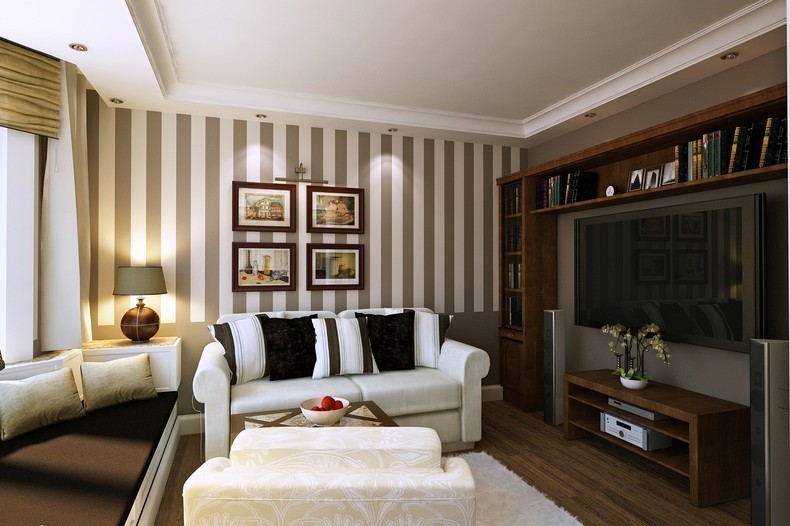
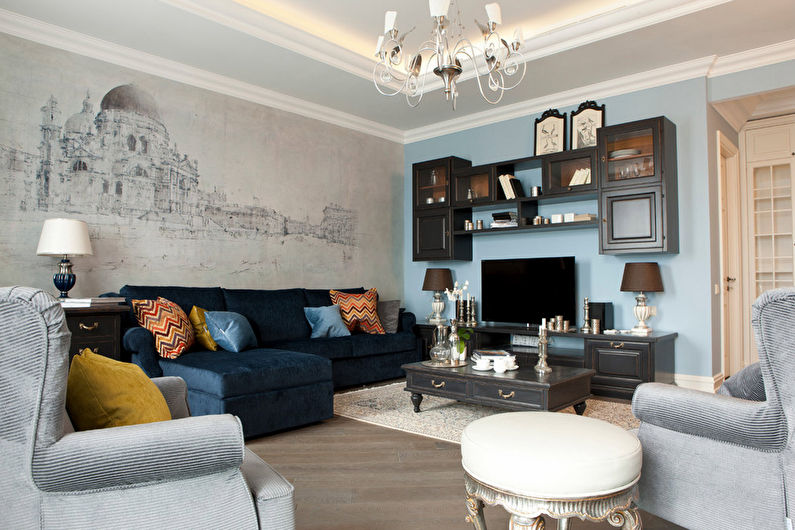
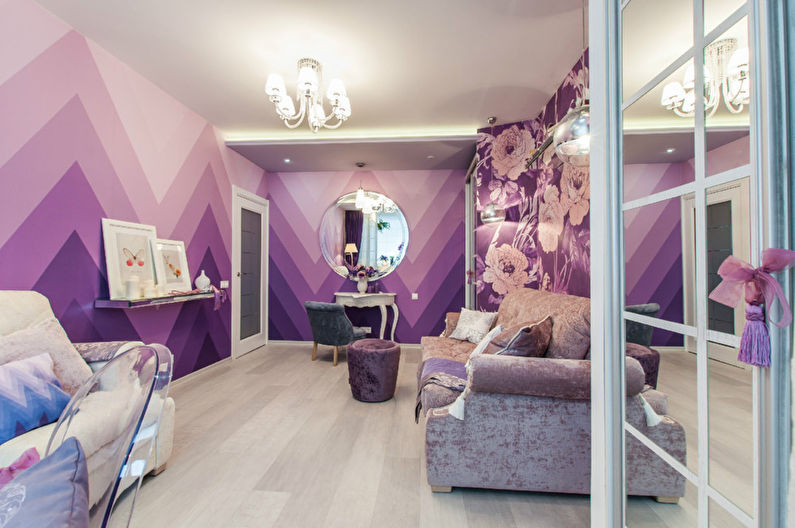
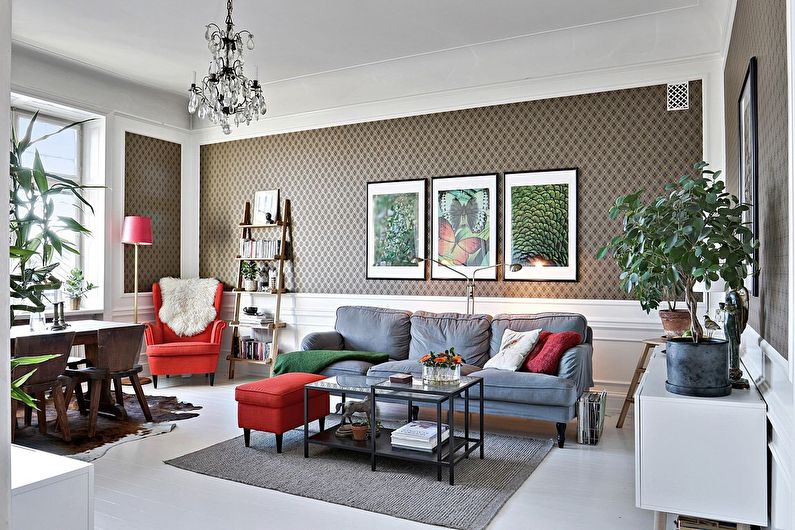
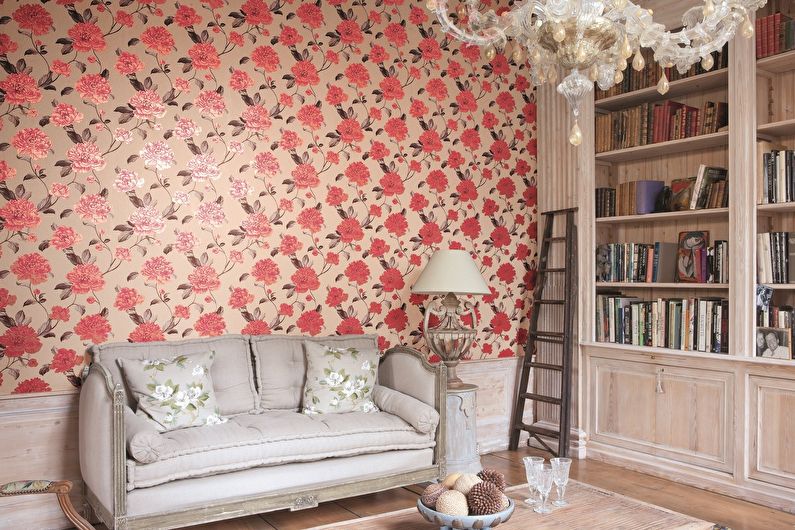
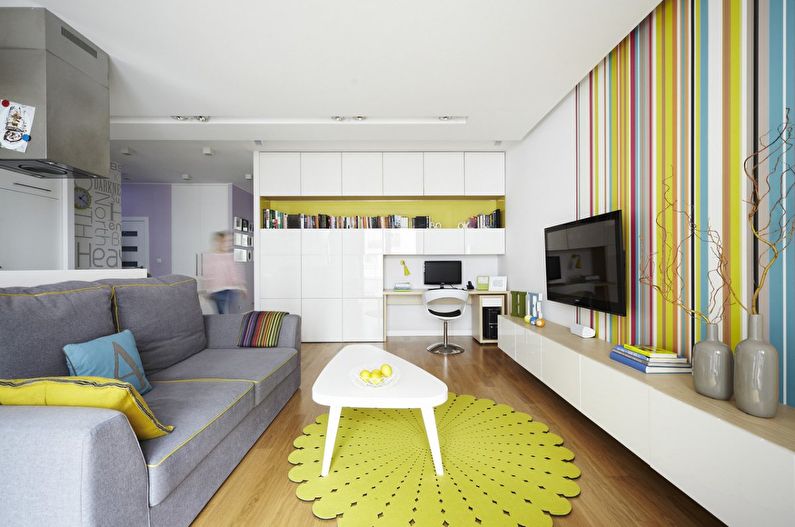
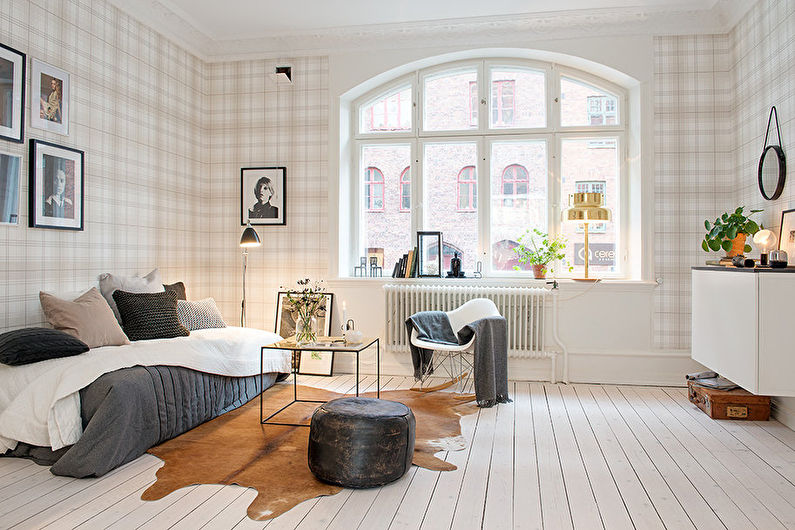

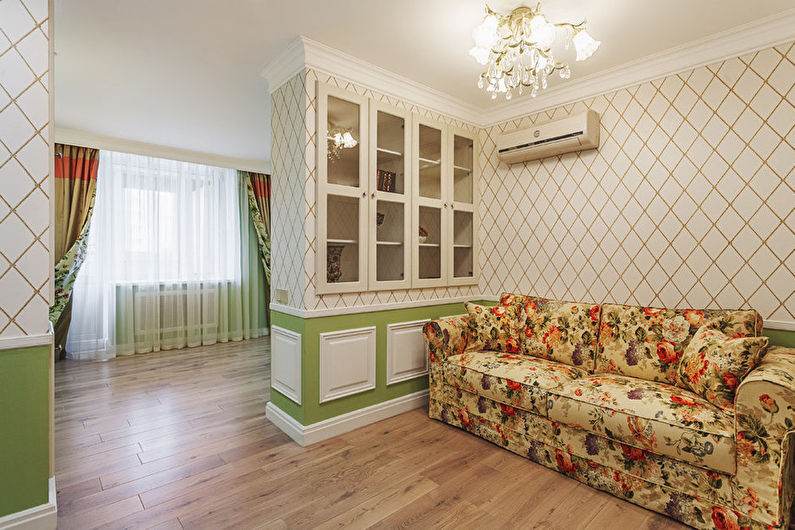
Video: Wallpaper in the interior of the living room
